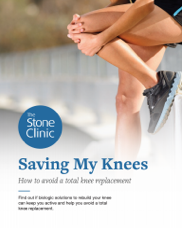ACL Depression Syndrome (Part 2)
Optimism only goes so far. At some point, after you are hurt, reality and depression set in. Here are a few observations.

Pictured: Knee surgery patient well-leg cycling in her first week of post-op rehab.
You tear your ACL. Skiing, soccer, and basketball are the most common causes, but these days even pickleball sends in the limping patient. There is an adrenaline surge shortly after the injury time. The search for the right doctor, the lining up of physical therapy, and the canceling of your sports dates—all are part of the bruhaha around the injury.
The surgery to repair or replace the injured ligament is surrounded by a mix of dread, excitement, and relief. The crutches, swelling, pain, and hassle are all helped by a great trainer and physical therapist.
But a few weeks later, the sledgehammer comes down. You wake up and realize that life, at least in the short term, has changed. This realization, and the feelings that come with it, are called ACL Depression Syndrome. (It could also be named for any knee or orthopaedic injury, but we first saw it in the late 1980s, in our ski racers in particular, and called it ACL.)
What was true then, and is true now, is that everyone experiences a bit of it after life-affecting injuries—and that anticipating and preparing for it makes a real difference.
To fight off ACL Depression Syndrome we counsel our patients to design a challenging daily exercise program for themselves. It starts the day after injury and certainly the day after surgery. No matter which joint is hurt, it can be isolated, and the rest of the body exercised. Having a terrific trainer and physical therapist helps introduce you to novel ways to drive up your heart rate, strengthen your core, and mobilize your entire body. Getting in a great sweat workout raises your testosterone levels, increases the circulation of adrenalin, dopamine, and pheromones.
That three-week mark, when depression often shows up, can be recognized in advance and slayed with the good feelings around sore muscles. Becoming fitter, faster, and stronger than you have ever been is our goal for you—and planning a life filled with alternative activities, new sports, and surprising challenges turns the injury into an opportunity to optimize your entire life.
If we can turn ACL Depression Syndrome into a predictable stage in almost every serious-but-treatable orthopaedic injury, the dip can be brief—and the upside can last a lifetime.


